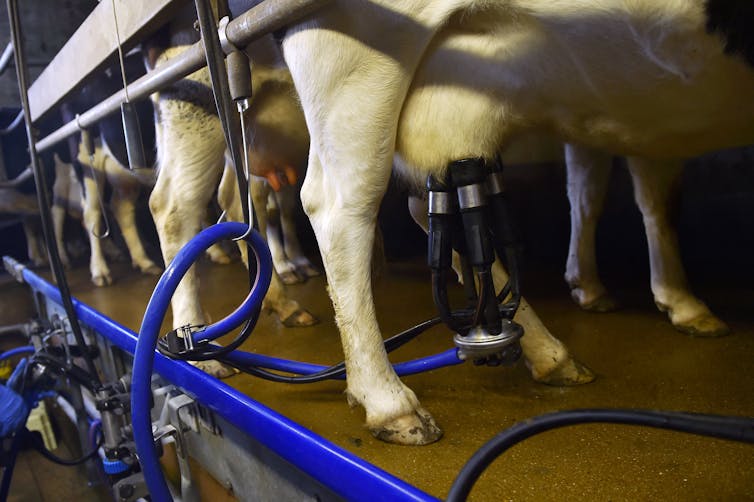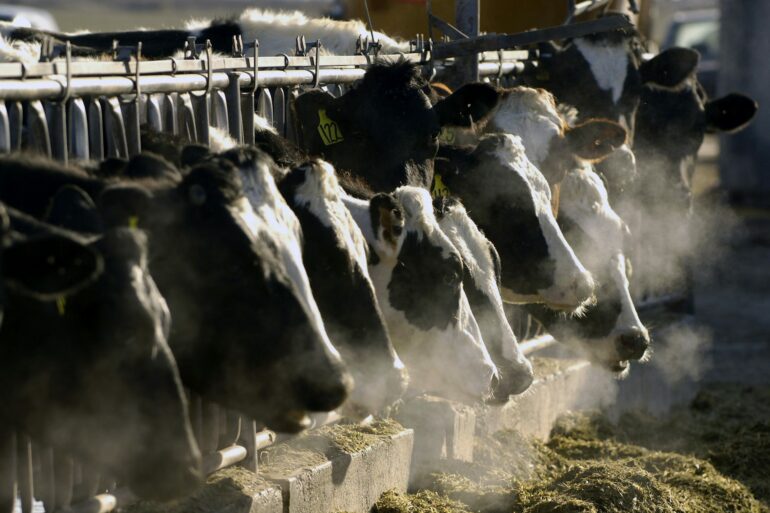The discovery of viral fragments of avian flu virus in milk sold in U.S. stores suggests that the H5N1 virus may be more widespread in U.S. dairy cattle than previously realized.
The Food and Drug Administration was quick to stress on April 24, 2024, that it believes the commercial milk supply is safe. However, highly pathogenic avian influenza virus can make cows sick, and the flu virus’s presence in herds in several states and now new federal restrictions on the movement of dairy cows between states are putting economic pressure on farmers.
Five experts in infectious diseases in cattle from the University of California, Davis – Noelia Silva del Rio, Terry Lehenbauer, Richard Pereira, Robert Moeller and Todd Cornish – explain what the test results mean, how bird flu can spread to cattle and the impact on the industry.
What are viral fragments of avian flu, and can they pose risks to people?
It’s crucial to understand that the presence of viral fragments of H5N1 doesn’t indicate the presence of intact virus particles that could cause disease.
The commercial milk supply maintains safety through two critical measures:
First, milk sourced from sick animals is promptly diverted or disposed of, ensuring it does not enter the food chain.
Second, all milk at grocery stores is heat treated to reduce pathogen load to safe levels, mainly by pasteurization. Pasteurization has been shown to effectively inactivate H5N1 in eggs, and that process occurs at a lower temperature than is used for milk.
The viral fragments were detected using quantitative polymerase chain reaction testing, which is known for its exceptional sensitivity in detecting even trace amounts of viral genetic material. These fragments are only evidence that the virus was present in the milk. They aren’t evidence that the virus is biologically active.
To evaluate whether the presence of the viral fragments corresponds to a virus with the capacity to replicate and cause disease, a different testing approach is necessary. Tests such as embryonated egg viability studies allow scientists to assess the virus’s ability to replicate by injecting a sample into an embryonated chicken egg. That type of testing is underway.
On April 24, 2024, the FDA said it had found no reason to change its assessment that the U.S. milk supply is safe. The agency does strongly advise against consuming raw milk and products derived from it because of its inherent risks of contamination with harmful pathogens, including avian flu viruses.
How does an avian flu virus get into cow’s milk?
Currently, cows confirmed to have H5N1 have different symptoms than the typical flu-like symptoms observed in birds.
Abnormal milk and mastitis, an inflammatory response to infection, are common. While there is speculation that other bodily secretions, such as saliva, respiratory fluids, urine or feces, may also harbor the virus, that has yet to be confirmed.

